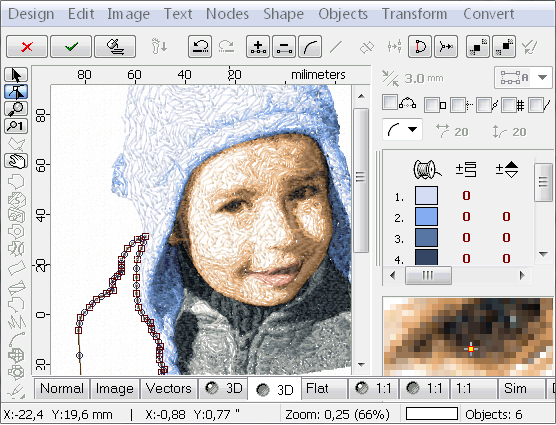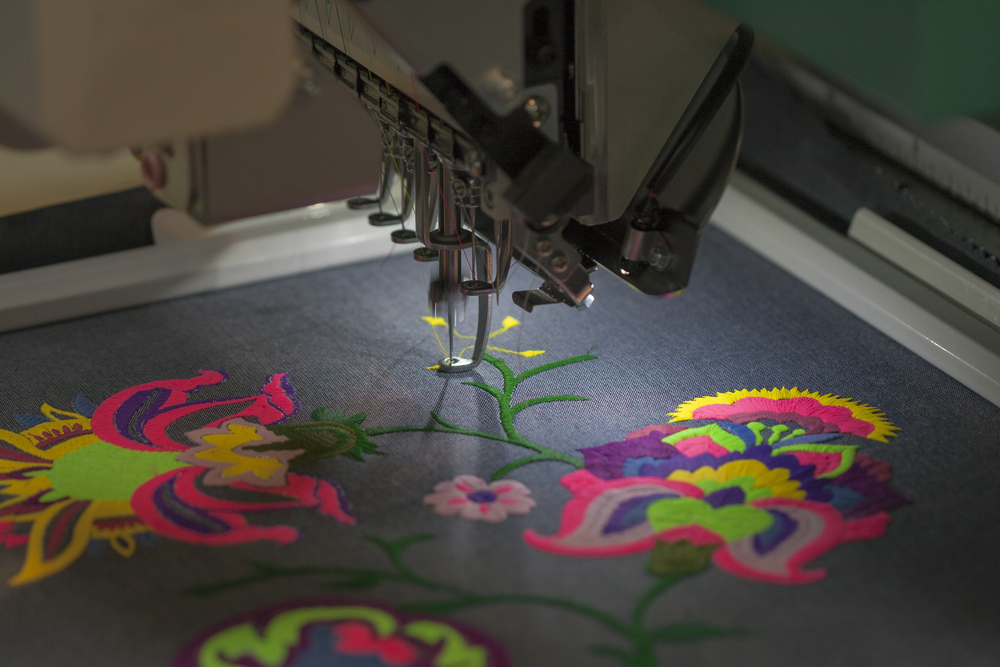Effective Digitizing for Embroidery: Quick Turnaround
Effective Digitizing for Embroidery: Quick Turnaround
Blog Article
Grasping the Embroidery Digitizing Process: Your Ultimate Overview
Needlework digitizing is a careful craft that requires accuracy and proficiency to equate intricate designs into electronic layouts for maker embroidery. As craftsmens get started on this journey to understand the embroidery digitizing process, a comprehensive understanding of the fundamentals sets the structure for quality.

Understanding Needlework Digitizing Essentials
Needlework digitizing essentials form the foundation upon which complex designs are equated into machine-readable styles for precise stitching. This preliminary action in the embroidery digitizing process is important for making certain that the last stitched product is a devoted representation of the initial design. Recognizing needlework digitizing basics includes understanding vital ideas such as stitch kinds, stitch direction, thickness, underlay, and draw payment.
Stitch types play a vital role in determining the aesthetic and textural end result of the stitched style. By choosing the ideal stitch type, whether it be satin, fill, or running stitch, digitizers can attain the desired effect and improve the overall quality of the needlework. Additionally, stitch direction affects the circulation and dimension of the style, while density determines the spacing and coverage of the stitches.
Moreover, padding sewing offers stability to the style by protecting the fabric and avoiding distortion throughout the needlework process. Draw payment is an additional necessary consideration to combat the all-natural tendency of material to contract when sewn. Mastering these needlework digitizing basics is basic for producing professional-quality embroidered items.
Picking the Right Digitizing Software Program
Choosing the ideal digitizing software is a vital decision that considerably affects the performance and high quality of the needlework digitizing process. Digitizing for Embroidery. When selecting the right digitizing software application, it is necessary to consider variables such as the intricacy of designs you intend to produce, the user-friendliness of the software application, the level of client support offered, and the compatibility with your needlework maker
There are different digitizing software alternatives readily available in the marketplace, ranging from fundamental programs for beginners to advanced software for expert digitizers. Some prominent selections consist of Wilcom EmbroideryStudio, Hatch Embroidery Software, and PulseID. These software provide a wide variety of tools and features to aid you develop intricate styles with simplicity.
Before deciding, it is suggested to check out the different software application options via free trials or demos to establish which one finest suits your requirements. Additionally, checking out reviews and looking for suggestions from you could check here knowledgeable digitizers can supply valuable insights right into the strengths and weaknesses of each software (Digitizing for Embroidery). By thoroughly assessing your demands and comparing the features of various digitizing software application, you can make an educated selection that improves your needlework digitizing operations
Digitizing Tools and Methods

Optimizing Layout Settings for Embroidery
Grasping the intricacies of design settings is essential in attaining optimum results in the needlework digitizing process, building upon the structure laid by understanding digitizing devices and methods. When maximizing style settings for embroidery, it is important to take into consideration aspects such as stitch kind, thickness, padding, pull settlement, and enrollment. Enrollment settings line up different elements of the design precisely, preserving total design stability.

Troubleshooting Common Digitizing Issues
When encountering typical digitizing concerns during the embroidery process, it is vital to understand the source and apply efficient solutions without try this out delay. One typical issue is stitch thickness problems, where stitches may be also dense, creating the textile to pucker, or as well sporadic, resulting in spaces in the design. Changing the stitch thickness settings in the digitizing software program can assist solve this problem.
Another frequent challenge is string breaks throughout the needlework process. This can take place as a result of various reasons such as wrong stress settings, plain needles, or utilizing low-grade string. Making sure proper upkeep of the embroidery machine, consisting of regular needle changes and tension modifications, can decrease the occurrence of thread breaks.
In addition, layout registration mistakes can cause misaligned elements within the needlework layout. Examining the layout positioning in the digitizing software program and making needed modifications before stitching can help in preventing this issue. By attending to these typical digitizing issues promptly and successfully, you can ensure a smoother needlework procedure and high-grade finished items.
Conclusion
In conclusion, mastering the needlework digitizing process calls for a solid understanding of the essentials, the ideal choice of software program, and understanding of tools and techniques. Maximizing style setups and troubleshooting usual digitizing problems are critical steps in ensuring high-grade needlework results. By following these steps carefully, one can attain precision and effectiveness in the digitizing procedure.
Report this page